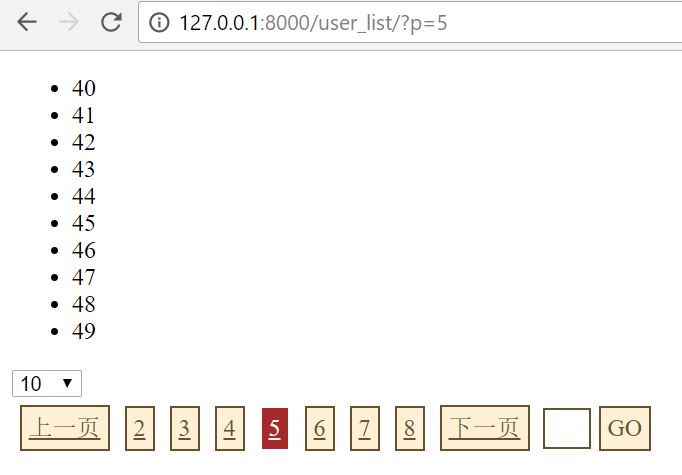Django 中 cookie的使用
Posted 乡下人1
tags:
篇首语:本文由小常识网(cha138.com)小编为大家整理,主要介绍了Django 中 cookie的使用相关的知识,希望对你有一定的参考价值。
Cookie是浏览器在客户端留下的一段记录,这段记录可以保留在内存或者硬盘上。因为Http请求是无状态的,通过读取cookie的记录,服务器或者客户端可以维持会话中的状态。比如一个常见的应用场景就是登录状态。Django里面,对cookie的读取和设置很简单。Cookie本身的格式类似字典,因此可以通过request的key或者get获取;然后他的设置则是通过response对象的set_cookie设定; 如果要取消cookie,把过期时间设置为当前时间就行了。
获取Cookie:
|
1
2
3
4
5
6
|
request.COOKIES[‘key‘]request.get_signed_cookie(key, default=RAISE_ERROR, salt=‘‘, max_age=None) 参数: default: 默认值 salt: 加密盐 max_age: 后台控制过期时间 |
设置Cookie:
|
1
2
3
4
5
6
7
8
9
10
11
12
13
|
rep = HttpResponse(...) 或 rep = render(request, ...) rep.set_cookie(key,value,...)rep.set_signed_cookie(key,value,salt=‘加密盐‘,...) 参数: key, 键 value=‘‘, 值 max_age=None, 超时时间 expires=None, 超时时间(IE requires expires, so set it if hasn‘t been already.) path=‘/‘, Cookie生效的路径,/ 表示根路径,特殊的:跟路径的cookie可以被任何url的页面访问 domain=None, Cookie生效的域名 secure=False, https传输 |
例1 设置一个login登录界面,一个index登录成功之后的跳转界面,如果没有登录那么自动跳转到登录界面
views.py
|
1
2
3
4
5
6
|
def index(reqeust): # 获取当前已经登录的用户 v = reqeust.COOKIES.get(‘username111‘) if not v: return redirect(‘/login/‘) |
注意Cookie的超时时间有2种方式,一个是直接指定max_age(N秒后超时),一个是指定expires后面跟一个具体的时间对象
httponly可以禁止JavaScript获取这个值,但是实际上没有什么鸟用,chrome或者抓包都能轻松获取所有的cookie
index.html
|
1
2
3
4
5
6
7
8
9
10
|
<!DOCTYPE html><html lang="en"><head> <meta charset="UTF-8"> <title></title></head><body> <h1>欢迎登录:{{ current_user }}</h1></body></html> |
login.html
|
1
2
3
4
5
6
7
8
9
10
11
12
13
14
|
<!DOCTYPE html><html lang="en"><head> <meta charset="UTF-8"> <title></title></head><body> <form action="/login/" method="POST"> <input type="text" name="username" placeholder="用户名" /> <input type="password" name="pwd" placeholder="密码" /> <input type="submit" /> </form></body></html> |
例2:
现实生活中,一般是把这个验证cookie的功能写成装饰器,这样直接在其他函数上面调用就行了板面
把例1改一下
|
1
2
3
4
5
6
7
8
9
10
11
12
13
|
def auth(func): def inner(reqeust,*args,**kwargs): v = reqeust.COOKIES.get(‘username111‘) if not v: return redirect(‘/login/‘) return func(reqeust, *args,**kwargs) return inner @authdef index(reqeust): # 获取当前已经登录的用户 v = reqeust.COOKIES.get(‘username111‘) return render(reqeust,‘index.html‘,{‘current_user‘: v}) |
例3: 我们知道可以使用fbv或者cbv来路由函数。例2使用了fbv的方式,用cbv也能实现
cbv里面,如果只打算装饰一个方法,那么直接在方法前面加个@method_decorator就行;如果打算装饰这个类里面所有的方法,那么在整个类的最上面进行装饰
views.py
|
1
2
3
4
5
6
7
8
9
10
11
12
|
@method_decorator(auth,name=‘dispatch‘)class Order(views.View): # @method_decorator(auth) # def dispatch(self, request, *args, **kwargs): # return super(Order,self).dispatch(request, *args, **kwargs) # @method_decorator(auth) def get(self,reqeust): v = reqeust.COOKIES.get(‘username111‘) return render(reqeust,‘index.html‘,{‘current_user‘: v}) def post(self,reqeust): v = reqeust.COOKIES.get(‘username111‘) return render(reqeust,‘index.html‘,{‘current_user‘: v}) |
urls.py
|
1
|
url(r‘^order/‘, views.Order.as_view()), |
例4 我们还可以通过JavaScript或者JQuery来设置Cookie,比如在前面分页的代码基础上,我们增加一个自定义显示行数的功能。
user_list.html 这里下了一个JQuery的插件,这样读取设置cookie比较容易;而且,我们还限制了cookie的使用范围,不是默认的所有范围,而是仅仅局限于/user_list这个路径里面
|
1
2
3
4
5
6
7
8
9
10
11
12
13
14
15
16
17
18
19
20
21
22
23
24
25
26
27
28
29
30
31
32
33
34
35
36
37
38
39
40
41
42
43
44
45
46
47
48
49
50
51
52
53
54
55
56
57
58
59
60
61
|
<!DOCTYPE html><html lang="en"><head> <meta charset="UTF-8"> <title></title> <style> .go{ width:20px; border: solid 1px; color: #66512c; display: inline-block; padding: 5px; } .pagination .page{ border: solid 1px; color: #66512c; display: inline-block; padding: 5px; papayawhip; margin: 5px; } .pagination .page.active{ brown; color: white; } </style></head><body> <ul> {% for item in li %} {% include ‘li.html‘ %} {% endfor %} </ul> <div> <select id="ps" onchange="changePageSize(this)"> <option value="10">10</option> <option value="30">30</option> <option value="50">50</option> <option value="100">100</option> </select> </div> <div class="pagination"> {{ page_str }} </div> <script src="/static/jquery-1.12.4.js"></script> <script src="/static/jquery.cookie.js"></script> <script> $(function(){ var v = $.cookie(‘per_page_count‘, {‘path‘: "/user_list/`"}); console.log(v) $(‘#ps‘).val(v); }); function changePageSize(ths){ var v = $(ths).val(); console.log(v); $.cookie(‘per_page_count‘,v, {‘path‘: "/user_list/"}); location.reload(); } </script></body></html> |
views.py 从前端获取每页行数,实例化的时候传递给我们的分页类
|
1
2
3
4
5
6
7
8
9
10
|
def user_list(request): current_page = request.GET.get(‘p‘, 1) current_page = int(current_page) val = request.COOKIES.get(‘per_page_count‘,10) val = int(val) page_obj = pagination.Page(current_page,len(LIST),val) data = LIST[page_obj.start:page_obj.end] page_str = page_obj.page_str("/user_list/") return render(request, ‘user_list.html‘, {‘li‘: data,‘page_str‘: page_str}) |
以上是关于Django 中 cookie的使用的主要内容,如果未能解决你的问题,请参考以下文章
